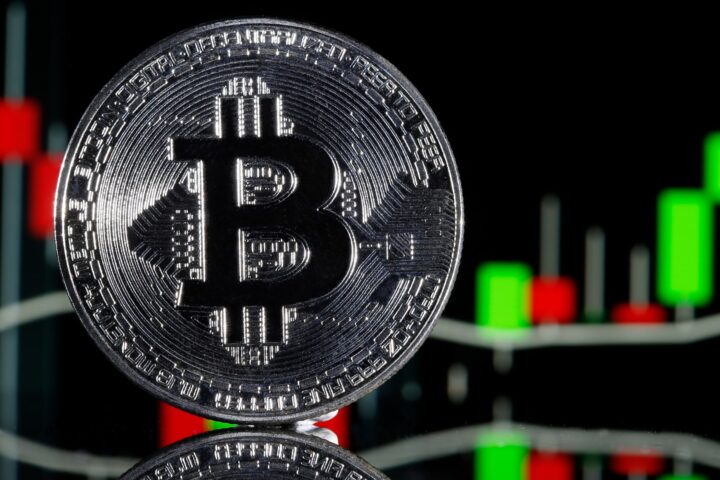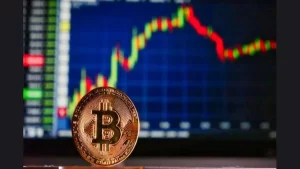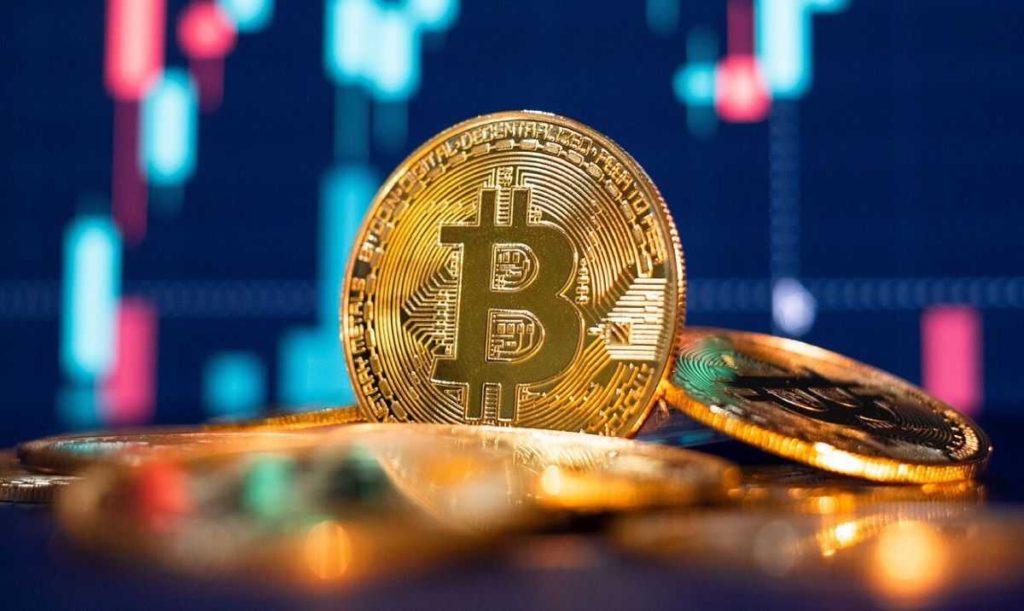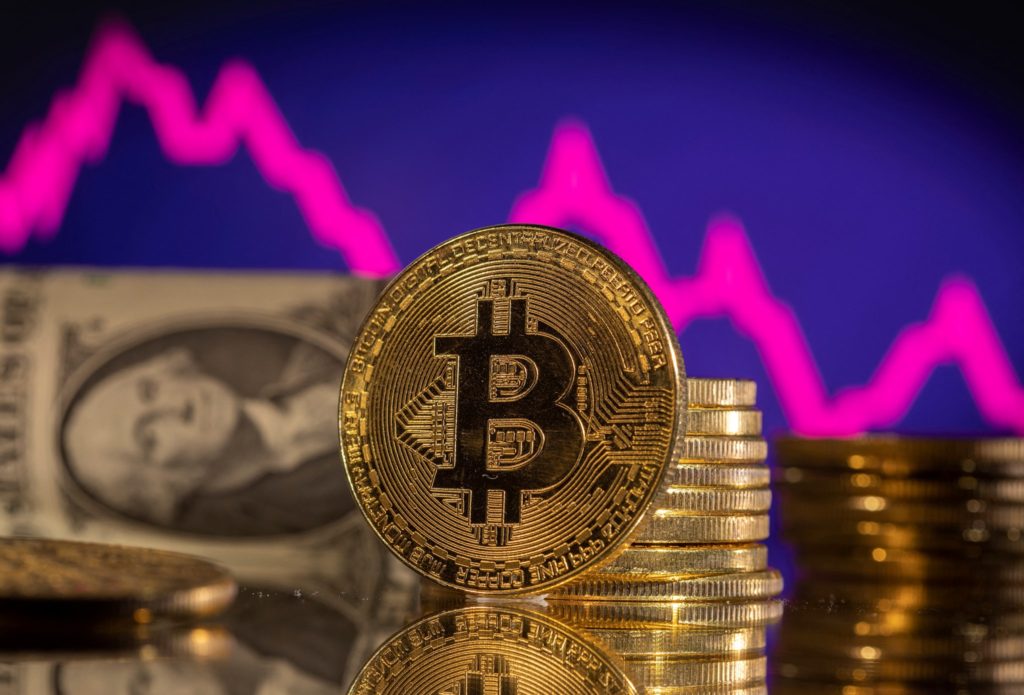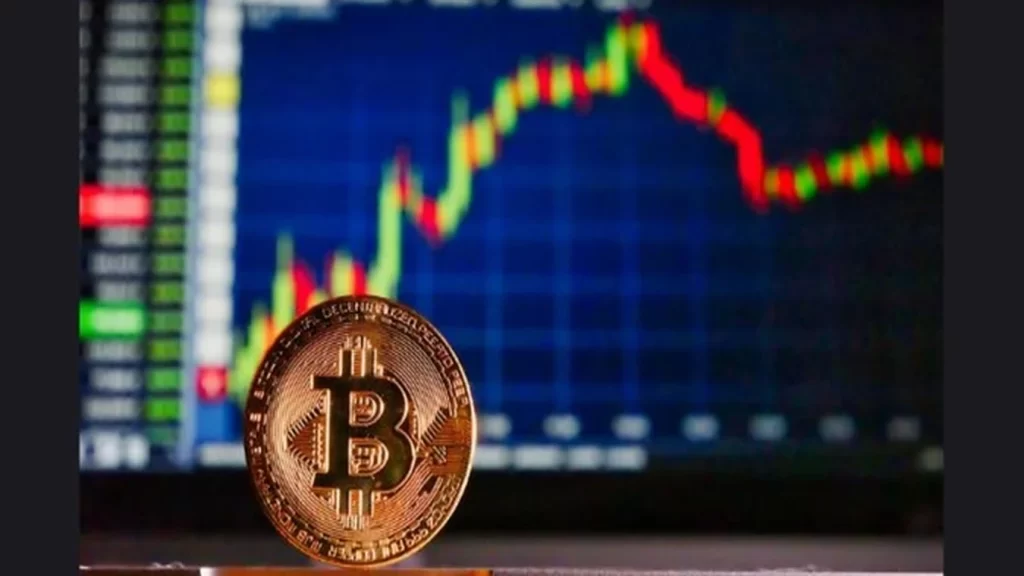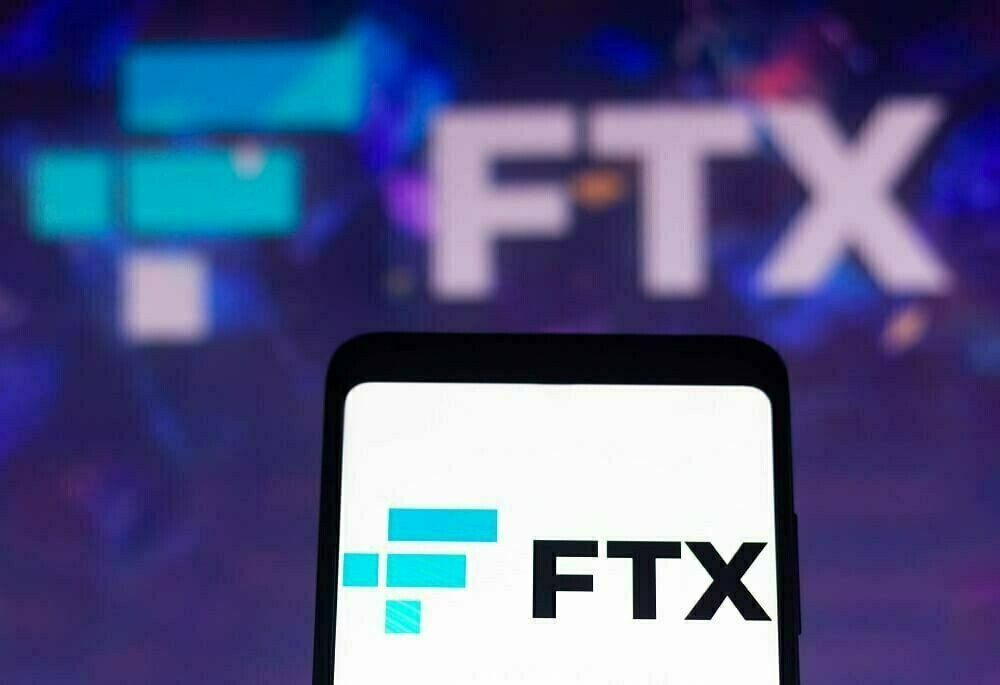Bitcoin’s price has remained below its 2023 high, indicating that the $44,000 resistance level has proven stronger than initially anticipated by investors.
Despite trading below $42,000, there is still potential for Bitcoin to reach $50,000 and beyond. In fact, signs suggest that this may be more likely than not.
A closer look at Bitcoin derivatives metrics reveals that traders have remained optimistic, even after a 6.9% drop.
However, the question remains: is this optimism justified for further gains?
On December 11, a significant $127 million liquidation of leveraged long Bitcoin futures occurred.
While this may seem substantial, it accounts for less than 1% of the total open interest, which encompasses the value of all outstanding contracts. Nevertheless, this liquidation triggered a 7% correction in less than 20 minutes.
Some argue that derivatives markets played a key role in this negative price movement, but it’s important to note that Bitcoin’s price rebounded by 4.2% in the following six trading hours after hitting a low of $40,200 on December 11.
This suggests that the impact of forceful liquidation orders had dissipated, disproving the idea of a crash solely driven by futures markets.
To assess whether Bitcoin whales and market makers remain bullish, traders can analyze the Bitcoin futures premium, also known as the basis rate.
In stable markets, these contracts typically trade at a premium of 5% to 10% due to their extended settlement period.
READ MORE: Solana’s Bonk (BONK) Emerges as Third-Largest Memecoin, Surpassing Pepe in Market Cap Surge
Data shows that despite the 9% intraday price drop on December 11, the BTC futures premium remained above the 10% neutral-to-bullish threshold throughout.
This indicates that there was no significant excess demand for shorts, as the metric did not drop into the neutral 5% to 10% range.
Examining options markets is another way to gauge investor sentiment. The 25% delta skew is a useful indicator that reflects whether arbitrage desks and market makers are charging excessively for upside or downside protection.
The BTC options skew has remained neutral since December 5, signaling balanced costs for both call and put options, showing resilience even after the 6.1% correction since December 10.
Furthermore, data on perpetual contracts, which include an embedded rate recalculated every eight hours, reveals a modest increase in the positive funding rate between December 8 and December 10.
This suggests increased demand for leverage among long positions, but the increase is not significant enough to burden most traders.
Overall, the recent rally to $44,700 and subsequent correction to $41,300 appear to have been primarily driven by the spot market.
This development reduces the likelihood of cascading liquidations due to excessive optimism related to the expectation of a spot exchange-traded fund (ETF) approval.
In summary, Bitcoin bulls can take comfort in the fact that derivatives metrics indicate that positive momentum has not waned despite the price correction.
Bitcoin speculators rushed to sell their holdings as the BTC price experienced a correction towards the $40,000 mark, according to the latest on-chain data.
On December 12th, figures from on-chain analytics firm Glassnode revealed that short-term holders (STHs), defined as entities holding BTC for 155 days or less, collectively offloaded over $2 billion worth of BTC.
This came as Bitcoin witnessed its most significant single-day drop of 2023, reaching a peak decline of 8.1%. The data was confirmed by Cointelegraph Markets Pro and TradingView.
Responding to the price drop, the more speculative segment of Bitcoin investors began reducing their exposure to the market, displaying signs of uncertainty about its future.
Glassnode’s data disclosed that on December 11th, STHs sent $1.93 billion worth of Bitcoin to exchanges, followed by another $2.08 billion on the subsequent day.
Both of these days marked record highs in terms of selling pressure from STHs, with entities in both profit and loss positions contributing to the trend.
The last time single-day selling exceeded the $2 billion threshold was in June 2022, triggered by concerns over the impending collapse of blockchain firm Celsius.
James Van Straten, a research and data analyst at crypto insights firm CryptoSlate, highlighted the significance of the week’s STH movements, noting that $2 billion was sold in total, with $1.1 billion resulting in losses.
READ MORE: Get Blue-Chip NFTs in BetFury NFT Lootboxes
This mainly impacted retail investors who had bought Bitcoin between December 6th and December 13th, likely due to the allure of Bitcoin’s 150% year-to-date gain.
While the trading volumes in BTC terms were less substantial, the December 12th figures marked the largest since the beginning of July when BTC/USD had just rebounded above the $30,000 level after dipping to $25,000.
Glassnode also pointed to various on-chain indicators suggesting that STHs might be growing wary of the bullish trend.
Profit-taking was noted around the month’s 19-month high near $45,000, and the researchers suggested that there might be a potential saturation of demand or exhaustion in play.
One of the key indicators highlighted was the Mayer Multiple, which gauges the relationship between the current spot price and the 200-week moving average.
The Mayer Multiple was approaching 1.5, a level that has historically acted as resistance during Bitcoin’s bull markets.
Glassnode stated that the current Mayer Multiple of 1.47 is close to the ~1.5 level, which has historically acted as resistance in previous cycles, including the November 2021 all-time high.
This level has not been breached for 33.5 months, the longest period since the 2013-2016 bear market.
Dominic Williams, the founder and chief scientist at Dfinity, has emphasized the unique potential of blockchain technology in combating climate change due to its decentralized and trustless nature.
He outlined three key ways in which blockchain can contribute to addressing climate challenges, including incentivizing climate action, improving efficiency, and providing an eco-friendly alternative to traditional information technology.
Blockchain networks have the capacity to establish trustless infrastructure that offers incentives for climate-related initiatives.
Additionally, they enhance efficiency while reducing the carbon footprint associated with conventional information technology systems.
One notable example illustrating the positive impact of blockchain on the environment is the Voluntary Recycling Credits (VRC) initiative.
The VRC initiative, designed to counteract the solid waste footprint, was recently introduced at the COP28 summit and operates on the Internet Computer (ICP) network.
Williams emphasized that the VRC is entirely on-chain, devoid of traditional tech dependencies like cloud services, which ensures transparency and eliminates potential gatekeepers.
READ MORE: Get Blue-Chip NFTs in BetFury NFT Lootboxes
International participants involved in minting and purchasing recycling credits can trust the accuracy and integrity of the system.
Williams further elaborated on how blockchain networks like ICP provide trustless infrastructure, eliminating the need for third-party intermediaries and enabling secure and transparent data verification.
This capability is instrumental in monitoring the proper recycling and management of waste materials, effectively tracing them from their origin to their final destination.
The Voluntary Recycling Credits exchange, facilitated by the ICP, enables auditable and secure transactions between waste offsetters and recycling companies.
This functionality empowers waste producers and recyclers to have complete confidence in the authenticity of the credits they purchase, sell, or trade.
Williams stressed that the ICP ensures the VRC operates transparently and in a tamper-proof manner, solidifying the trustworthiness of minted and sold recycling credits and transactions.
In summary, Dominic Williams advocates for the pivotal role of blockchain technology in the fight against climate change.
Blockchain networks, such as the Internet Computer, provide trustless infrastructure, enhance transparency, and promote secure and eco-friendly solutions like the Voluntary Recycling Credits initiative.
These innovations hold great promise in incentivizing climate action and reducing the environmental impact of information technology systems.
Bitcoin’s price experienced a 5% dip within the last 24 hours, settling at $41,645 on December 11.
However, despite this sudden correction, technical indicators and on-chain data suggest that Bitcoin remains robust, as bulls actively work to push the price back above the $44,000 mark.
On-chain data indicates that Bitcoin’s price had become “over-extended.” It plummeted by as much as 7.2%, reaching $40,300 on Coinbase, which led to discussions among analysts.
Julio Moreno, head of research at CryptoQuant, an on-chain analytics firm, pointed out that Bitcoin’s price had become “overheated” following its recent surge above the psychologically significant $40,000 level.
Further data from the on-chain data analysis firm Lookintobitcoin revealed signs of exhaustion among bullish investors.
According to their December 2023 report, Bitcoin’s price had reached its near-term target as per the golden ratio multiplier, a metric based on the Crosby Ratio.
This highlighted that Bitcoin’s near-term price had become “over-extended,” necessitating a correction or at least a slowdown.
In essence, Bitcoin had entered overbought conditions above $40,000, with its relative strength index (RSI) indicating overbought status since December 5.
This early warning signaled a potential reduction in buying pressure as traders began to perceive the rally’s loss of momentum and took profits.
The primary challenge for Bitcoin’s price remains the formidable resistance at the $44,000 supply zone.
The Lookintobitcoin golden ratio multiplier indicator indicated that the 1.6 multiplier target had been reached around this area. Bitcoin has struggled to convincingly breach this level over the past week, facing significant rejection.
The intensity of the resistance at $44,000 is underscored by on-chain data from IntoTheBlock’s “in/out of the money around price” (IOMAP) model.
This data indicates that the $43,346–$44,627 price range is where approximately 585.77 BTC was previously acquired by approximately 1.43 million addresses.
READ MORE: VanEck Files Fifth Amended Application for ‘HODL’ Bitcoin ETF with SEC
Any attempts to surpass this level would likely encounter aggressive selling from this group of sellers.
Nonetheless, this ongoing correction may be viewed as a bear trap within an overall bullish trend that has developed over recent months.
Data from crypto market intelligence firm Santiment indicates that Bitcoin’s exchange outflows are on the rise, with the BTC exchange flow balance now at -347.
This negative reading implies that outflows are surpassing inflows, a sign that investors are more inclined to hold than sell, which is generally considered bullish.
From a technical perspective, Bitcoin has remained above all major moving averages, and these indicators have continued their upward trajectories, providing strong support levels.
The moving average convergence divergence (MACD) indicator also remains in positive territory, with the MACD line positioned above the signal line, favoring further upward movement in Bitcoin’s price.
Therefore, it is likely that Bitcoin’s price will continue to rise from its current levels, with buyers targeting a breakout above $44,000.
A successful break beyond this level could propel Bitcoin toward the psychological milestone of $50,000, either in early 2024 when the United States Securities and Exchange Commission is expected to decide on spot Bitcoin exchange-traded fund applications or during the next Bitcoin halving event.
Wylie Aronow, the NFT entrepreneur known as Gordon Goner, has reaffirmed his decision to stay away from Yuga Labs, the NFT company he co-founded, despite making progress with his health.
Addressing rumors of his potential return, Aronow stated on December 11 that he is not prepared to resume even part-time work, emphasizing the importance of ensuring his long-term well-being for those who depend on him.
He explained that his health journey is still marked by unpredictable fluctuations, making it a marathon-like endeavor.
Some days, Aronow feels ready to fully immerse himself in work, while on other days, he finds himself in need of emergency medical attention.
Aronow took a leave of absence in late January due to a congestive heart failure diagnosis. At the time, he also dismissed allegations of Yuga Labs using neo-Nazi and racist imagery as “lies” and pledged to continue serving as a board member and strategic advisor to the company.
Despite stepping back from day-to-day operations, Aronow has remained involved in overseeing Yuga Labs, which is responsible for NFT projects like Bored Ape Yacht Club (BAYC) and CryptoPunks.
He has identified key issues hindering the company’s progress and recently addressed them during a board meeting.
READ MORE: Lifinity DEX Suffers $699,090 Loss as Arbitrage Bot Exploits Unexpected Trade Response
While Aronow has confidence in the current leadership of Yuga Labs, he acknowledges the pressure the company faces in 2024 and believes they will rise to the occasion.
He expressed his support for the team, signaling his commitment to their success.
Reflecting on his past approach to work, Aronow admitted that he had pushed himself beyond his limits, working long hours nearly every day. He regrets not seeking a better work-life balance earlier, heeding the advice of those around him.
Yuga Labs underwent leadership changes during Aronow’s absence, appointing Daniel Alegre, former president and chief operating officer of Activision Blizzard, as CEO.
Aronow, along with Greg Solano, Zeshan Ali, and Kerem Atalay, co-founded Yuga Labs in February 2021.
The company is renowned for its NFT creations, including CryptoPunks, Bored Ape Yacht Club (BAYC), MeeBits, and Othersidemeta. As they head into 2024, Yuga Labs is gearing up for a critical year with a renewed focus on innovation and progress.
Avalanche (AVAX) has defied the recent downtrend in the cryptocurrency market, standing out with an impressive 79% weekly gain while other digital assets have struggled.
Analysts attribute this resilience to various factors, including notable partnership announcements, increased trading volumes, and a shift in how altcoins are perceived.
On December 11, while Bitcoin and Ethereum experienced a 6% decline, AVAX recorded a remarkable 13.6% gain within a 24-hour period, according to CoinGecko data.
One contributing factor to the excitement surrounding AVAX is its recent partnerships with financial giants JPMorgan and Citigroup through collaborations with the Avalanche Foundation.
These partnerships focus on real-world asset tokenization initiatives, sparking interest among investors.
Ryan Mcmillin, the Chief Investment Officer at Merkle Tree Capital, highlighted the surge in daily transactions for AVAX, which has grown from around $200,000 to $4.5 million in just a few days.
Additionally, daily active addresses have been on an upward trajectory, further bolstering AVAX’s appeal.
The Avalanche network’s Total Value Locked (TVL) has experienced an impressive 82% growth, soaring from $490 million to $894 million over the past three months since September 12.
READ MORE: VanEck Files Fifth Amended Application for ‘HODL’ Bitcoin ETF with SEC
Simultaneously, AVAX token trading volume has skyrocketed by an astonishing 2,436% during the same period, as indicated by DefiLlama data.
Henrik Andersson, Chief Investment Officer at Apollo Crypto, pointed out that AVAX had been undervalued by broader market standards until recently.
He highlighted AVAX’s TVL surpassing that of Solana, despite having only a quarter of Solana’s market capitalization.
However, while TVL remains higher, AVAX’s market capitalization is now only half that of Solana.
Andersson believes that in 2024, some altcoins may outperform Bitcoin, mentioning Immutable (IMX) and Synthetix as tokens that have already demonstrated such potential since 2022.
In a December 11 crypto fund flows report, CoinShares’ Head of Research, James Butterfill, noted that despite significant price declines in Bitcoin and Ethereum, Solana and Avalanche attracted substantial inflows of $3 million and $2 million, respectively.
This observation reaffirmed their status as “firm favorites” within the altcoin sector.
The United States Internal Revenue Service (IRS) is pursuing a $24 billion tax claim against the bankrupt crypto exchange, FTX, potentially derailing any hopes of a “meaningful recovery” for the exchange’s victims.
The IRS has been seeking to collect outstanding taxes from FTX and its sister company, Alameda Research, since May, initially claiming a staggering $44 billion across 45 separate claims.
However, in a recent filing with the U.S. Bankruptcy Court for the District of Delaware on December 10th, FTX vehemently contested the IRS’s claims, deeming them without merit and detrimental to the compensation meant for affected FTX users.
FTX argued that the IRS’s demands could effectively prevent most of its creditors, who are themselves victims of fraud, from receiving any substantial reimbursement.
FTX’s lawyers asserted that there was no factual basis for the IRS’s claims, as they far exceeded any income ever earned by the exchange.
The exchange contended that the $24 billion claim was not based on any reasonable estimate and had no legal validity.
Despite FTX’s protests, the IRS is still in the process of conducting its audit, which is expected to take another eight months, as indicated in the filing.
The impending legal battle over the legitimacy of the IRS’s claim is set to take place in court on December 12th.
In the meantime, FTX’s administrators have managed to recover approximately $7 billion in assets, including $3.4 billion in cryptocurrencies.
However, the former CEO of FTX, Sam Bankman-Fried, faced a significant setback in November when he was convicted on all seven fraud-related charges.
He is currently being held at the Brooklyn Metropolitan Detention Center, awaiting sentencing, which is scheduled for March 28, 2024.
As FTX grapples with the IRS’s substantial tax claim and its former CEO’s legal troubles, the fate of the exchange and its creditors hangs in the balance, with the upcoming court battle holding the key to determining the legitimacy of the IRS’s demands and the potential for meaningful recovery for FTX’s victims.
Bitcoin Core developer Luke Dashjr has refuted any involvement in the inclusion of Bitcoin inscriptions as a cybersecurity concern on the United States National Vulnerability Database’s (NVD) Common Vulnerabilities and Exposures (CVE) list.
This controversy arose when Dashjr, in a December 6th post on X (formerly Twitter), alleged that inscriptions, utilized by the Ordinals protocol and BRC-20 creators for embedding data in satoshis, were exploiting a Bitcoin Core vulnerability, thus “spamming the blockchain.”
Several days later, Bitcoin inscriptions surfaced on the U.S. vulnerability database as part of the CVE list on December 9th, describing it as a security flaw linked to the development of the Ordinals protocol in 2022.
Nonetheless, Dashjr, despite his vocal criticism of Bitcoin Ordinals, asserted that he played no role in adding inscriptions to the vulnerability database’s CVE list.
The CVE list is structured to allow any developer to report a vulnerability, subject to approval by the CVE Assignment Team for public awareness purposes.
As of December 11th, the NVD updated the listing, assigning inscriptions a base severity score of “5.3 Medium.”
This rating indicates that the exploitation of this vulnerability offers “very limited” access to a network or presents challenging hurdles for executing denial-of-service attacks, according to Atlassian, a software firm.
READ MORE: Defunct Crypto Firms FTX and Alameda Move $23.59 Million in Digital Assets to Top Exchanges
Dashjr explained that the CVE list’s 5.3 score primarily resulted from the vulnerability’s minimal impact on the availability of the Bitcoin network.
Nevertheless, he contended that the score might underestimate its long-term consequences, suggesting that if the availability impact were classified as “High,” the CVSS base score would reach 7.5.
The debate surrounding Bitcoin inscriptions continues to unfold on social media platforms.
While some Bitcoin enthusiasts argue that inscriptions are overloading the network, Ordinals proponents, including Udi Wertheimer, co-founder of Taproot Wizards, maintain that Ordinals are essential for the future adoption and revenue growth of the Bitcoin network.
The Bitcoin network has experienced increased congestion in recent months due to heightened interest in Ordinals’ nonfungible token inscriptions and BRC-20 token minting.
Data from mempool.space indicates over 275,000 unconfirmed transactions, with average medium-priority transaction costs surging from approximately $1.50 to around $14.
Patching the so-called inscriptions bug could potentially limit future Ordinals inscriptions on the network.
El Salvador’s eagerly awaited Bitcoin bonds, colloquially known as “Volcano Bonds,” have received regulatory approval and are slated for launch in early 2024.
The official announcement came via a statement from The National Bitcoin Office (ONBTC) on December 11.
The Digital Assets Commission of El Salvador has granted its endorsement for the Volcano Bond, marking a significant milestone in the country’s crypto journey.
Nayib Bukele, the pro-Bitcoin leader of El Salvador, also lent credibility to the news by sharing a post captioned, “Wen volcano bond,” along with multiple reposts confirming the bond’s issuance in the first quarter of 2024.
The concept of Volcano Bonds first emerged in November 2021 when El Salvador signaled its intent to explore this innovative financial instrument.
Subsequently, on January 11, the country passed groundbreaking legislation that established the legal framework for Bitcoin-backed bonds.
The primary objectives of the Volcano Bond are to address sovereign debt obligations and finance the development of “Bitcoin City,” an ambitious project aimed at embracing cryptocurrency technology.
READ MORE: VanEck Files Fifth Amended Application for ‘HODL’ Bitcoin ETF with SEC
The ONBTC disclosed that the bond issuance will take place on the Bitfinex Securities Platform, a trading platform dedicated to blockchain-based equities and bonds, registered within El Salvador.
This marks the inception of Bitcoin-based capital markets within the country.
Investors can anticipate a ten-year tenure for the bonds, offering an annual yield of 6.5%.
El Salvador has recently embarked on a substantial Bitcoin mining initiative valued at $1 billion, which harnesses the nation’s volcanic resources. Luxor Technology is a key partner in this venture, and the mining operations will be powered by the Conchagua volcano.
It is worth noting that the approval of the Volcano Bond comes nearly 21 months after the initial announcement by Alejandro Zelaya, the former finance minister of El Salvador, who had previously projected a mid-March 2022 launch date.
The regulatory green light signifies the government’s continued commitment to integrating cryptocurrencies into its financial infrastructure, showcasing the nation’s determination to be at the forefront of the crypto revolution.
Japanese financial services firm SBI Holdings and Saudi Arabian state-owned oil giant, Saudi Aramco, are contemplating a strategic collaboration in the realms of digital asset investment and semiconductor production projects.
Their intentions were formalized through the signing of a memorandum of understanding (MoU) on December 7th, with plans to establish SBI Middle East in Riyadh as the central hub for regional operations.
As per the MoU, SBI Holdings and Saudi Aramco will explore opportunities to join forces in the digital asset space, including potential co-investments in digital asset portfolios.
Additionally, the two entities may jointly identify Japanese digital asset startups that have the potential to expand their presence into Saudi Arabia.
Furthermore, they are considering launching semiconductor production ventures in both countries.
It’s worth noting that the scope of this partnership could expand further with mutual agreement between the two organizations.
Saudi Aramco, currently the world’s second-largest corporation by revenue, is looking to leverage these investments to enhance its supply chain capabilities.
While it’s worth noting that Saudi Arabia does not legally recognize cryptocurrencies, the government has exhibited a keen interest in Web3 technologies.
Notably, the MoU also highlighted SBI Holdings’ existing partnership with Taiwan-based Powerchip Semiconductor Manufacturing.
READ MORE: Defunct Crypto Firms FTX and Alameda Move $23.59 Million in Digital Assets to Top Exchanges
This move by SBI Holdings marks its latest effort to establish a significant presence in the Middle East.
In November, the company entered into a joint venture with the fintech investment arm of British bank Standard Chartered, SC Ventures, to create an investment company in the United Arab Emirates (UAE).
This initiative aims to invest in various aspects of market infrastructure, risk management, compliance tools, DeFi, tokenization, consumer payments, and the metaverse.
Prior to this, in September, SBI Holdings partnered with UAE-based TradeFinex to establish a joint venture in Japan, focused on localizing TradeFinex’s XDC Network enterprise blockchain.
Notably, SBI Holdings holds the distinction of being Ripple’s largest external shareholder and has been in partnership with the blockchain company since 2018.
Furthermore, in late November, SBI Holdings announced another MoU, this time with Circle, aimed at boosting the circulation of USD Coin and the proliferation of Web3 services in Japan, contingent on regulatory approvals.

